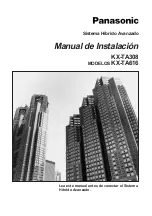
MAN-79
The above data are merely indicative, as many factors influence the carburetion
and only a few are easily ponderable. With these indications we wish to give the
user a general guide line and avoid damaging the engine under environmental
conditions which make the carburetion substantially leaner.
A fine carb. adjustment will always have to be performed according to the
experience and to the tests on track.
As completion of this guideline, here are a few general recommendations.
The carburettor is provided with an enrichment system to
start the engine, (lever "C" - see fig. 5) when it is cold and/or
when it has been kept inactive for a certain time. To get the
max. efficiency, this device must be used with gas throttle
closed or slightly opened. A few seconds after the engine
has been started, shut the enrichment system to avoid
engine flooding .
The only problems which could be experienced with these
carburettors are connected to the fuel feeding.
The fuel feeding is regulated by the floater-valve system located in the
float chamber.
In case the fuel contains impurities, preventing the proper admission valve
closing, the level in the float chamber increases, and the exceeding fuel is
discharged through the carb. vents. In this case, it is necessary to
disassemble the float chamber, remove the floaters and the fuel valve
and clean it with compressed air (see fig.6 - 7).
In case of puncture of one or both floaters, the fuel valve cannot be closed, and so
the exceeding fuel overflows through the vents. It will be then necessary to
disassemble the float chamber, check the floaters status and eventually replace
them with others having the same weight.
In case the engine has to remain out of operation for a long period, the fuel
admission valve could get stuck (either on opening or on closing positions) for
incrustations.
In the first case presents the same phenomenon of fuel overflowing from the
vents of the carburettor, in the second, the engine won't start for insufficient
feeding.
Fig.5
C



































